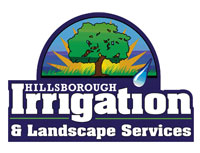
Hillsborough: Get Your Sprinklers Ready for the Cold
Before winter arrives, it would be wise to do a winterization on your yard’s irrigation system— after all, you want to protect your landscape and cold-hardy plants. By cleaning out your sprinkler pipes, you can ensure that nothing freezes over as the temperature drops. If excess water is left inside, the pipes could burst, and you might have to pay a lot of money for repairs.
Deciding When to Winterize Your Sprinkler

Deciding on the ideal time to do a sprinkler winterization is important. You can’t wait too long to get this done, because when the temperature starts falling below the freezing point, it will be too late. Keep an eye on the temperature outside; when the temperature starts to drop quickly it’s time to get to work.
The ideal range for winterizations is from the beginning of October to the middle of December. Simply put, if you get this done before the official start of winter you should be fine. However, getting done earlier would be recommended.
Shutting Down & Insulating Your Sprinkler Systems

The first step to winterizing your sprinklers is to insulate the pipes before the first frost rolls in. To do this, the water supply that flows to your irrigation system will need to be shut off. Without water flowing through the pipes, you won’t be at risk of dealing with bursting pipes.
Next, the main water valve will need to be insulated. The valve is at risk of freezing during the winter, so to prevent this from happening you need to insulate it. This can be done by taping a plastic bag over the valve with insulating tape. If there are any sprinkler pipes above the ground you need to insulate those too.
Empty the Backflow Device
The next step is to get rid of any water left in your system’s backflow device. All the ball valves for this device need to be opened up to complete this process. To find the valves, check along the piping to find ones that appear to have large, flat-headed screws. They will need to be turned to a 45 degree angle to be opened.
The valves will be left at this angle through the duration of the winter, and will need to be reset once the spring arrives. To ensure you complete this process properly, consider working with a licensed landscaper.
Removing Excess Water

Even after everything is shut down, there may be some excess water resting in the pipes. If this water freezes it could damage the entire system, so it will need to be drained.
If you have an automatic drain valve, your pipes are automatically cleared out once the system goes off. Keep a close eye out for wet areas in your yard after, since this might mean there is an issue with one of the drains. If you have a manual valve, you may need to use an external device to manually drain the water.
A common technique used for clearing out water is blowing out the pipes with an air compressor. Please be careful with the device you use, because using the wrong one can damage the entire system. Working with a professional landscaping team is advised if you want to go down this route.
Want to learn more?
